
The popularity of katsu-less, “katsu curry” flavored food continues to rampage throughout Europe.
Katsu is short for katsuretsu—cutlets. Therefore, the “katsu” part of “katsu curry” is actually referring to the breaded cutlet sat atop the rice and doused in delicious curry. This is why plenty of Japanese meals starring katsu don’t contain any curry at all. Unfortunately, however, while Europe is undergoing something of a katsu curry craze, marketers and customers alike can’t seem to wrap their heads around the concept of katsu curry being anything other than the mildly spicy Japanese-style curry served in the dish.
So while we might expect home-grown European companies to make this common slip-up, it’s another story entirely when it comes to Japanese food company Ajinomoto. After coming across this package of Chicken Katsu Curry Style Gyoza in an Asian supermarket in Ireland, our Japanese-language reporter Miho Kouzuki was spellbound. Ajinomoto themselves had branded the packet with their seal of approval… so how would it taste?
▼ Surely the No. 1 gyoza brand in Japan wouldn’t let her down.
Miho paid 5.95 euros (US$6.90) for the chicken katsu curry style experience, netting herself 30 gyoza. She immediately flipped the package over to see further explanations for what lay in wait and made a dramatic discovery…
▼ No “katsu”!
Yes, the ingredients told the whole truth—Japanese-style chicken curry dumplings! No sign of cutlet whatsoever!
Once home, Miho emptied out the contents of the bag. Japanese gyoza typically come lined up in neat little rows inside a plastic tray, so the free-falling gyoza tumbling out of the bag were a bit of a surprise. They were also much larger than typical frozen gyoza.
The packaging offers two ways to cook your frozen gyoza. Fry them on a stovetop for five minutes, or deep fry them for two and a half minutes. The thumbs-up icon next to the latter clearly indicated Ajinomoto’s personal recommendation.
Feeling wilful, Miho refused and pan-fried her first set of gyoza. They filled the room with the aromatic smell of curry as they sizzled, and Miho couldn’t help but get a little excited over how this strange hybrid gyoza might actually taste.
She hesitantly raised one to her lips…
And was baffled to find its flavor was completely underwhelming.
Though she could taste plenty of cumin, there was no punchy burst of flavor—no “wow” factor. It was surprisingly mild considering the bombastically billed combination of curry and gyoza. And of course, it tasted absolutely nothing like katsu curry. There was no cutlet in it, after all.
Miho decided to give the deep-fried version a shot. What else did she have to lose?
After a 2.5-minute round in the deep-fryer, the gyoza didn’t look much different to their pan-fried counterparts. Once they passed Miho’s lips, though, the difference became as clear as night and day. These were hardly fit to be called gyoza… They were more like delicious, crispy, delectable samosas!
The flavor became somehow more concentrated and vivid through the deep-frying process, and ironically, the rich curry flavor granted it more of an Indian vibe than a Japanese one. Still, the gyoza-samosas were so delicious that Miho had to chalk them up as a success! While interpretations of Japanese cuisine from other countries often fall short when it comes to replicating an authentic flavor, combining cuisines can bring about something new and exciting…and delicious, too!
Images © SoraNews24
● Want to hear about SoraNews24’s latest articles as soon as they’re published? Follow us on Facebook and Twitter!
[ Read in Japanese ]

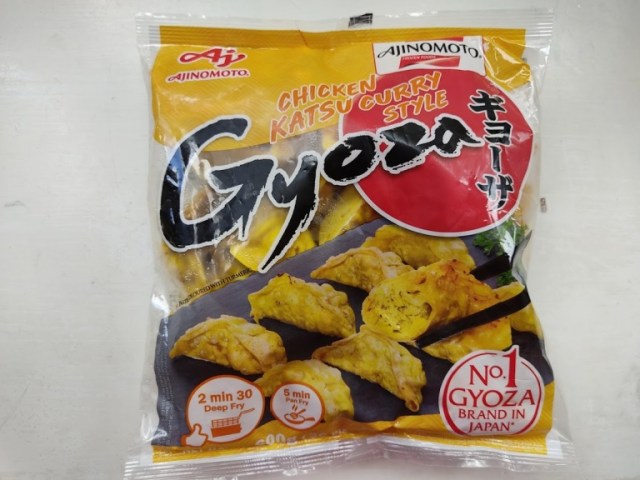
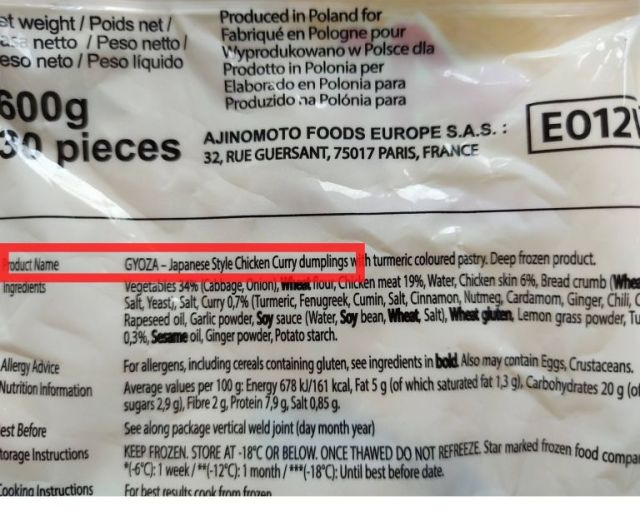
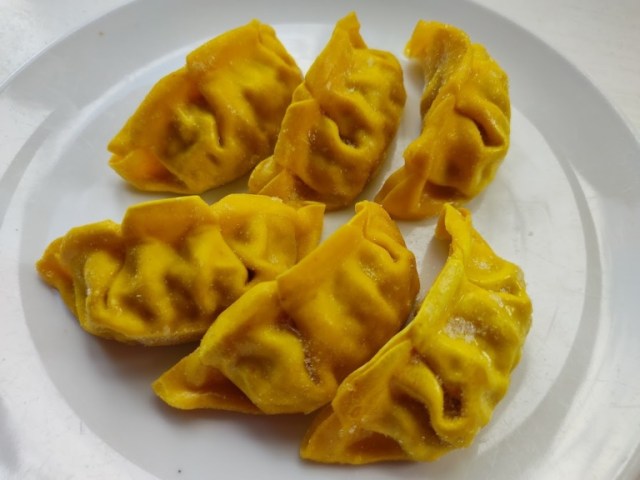
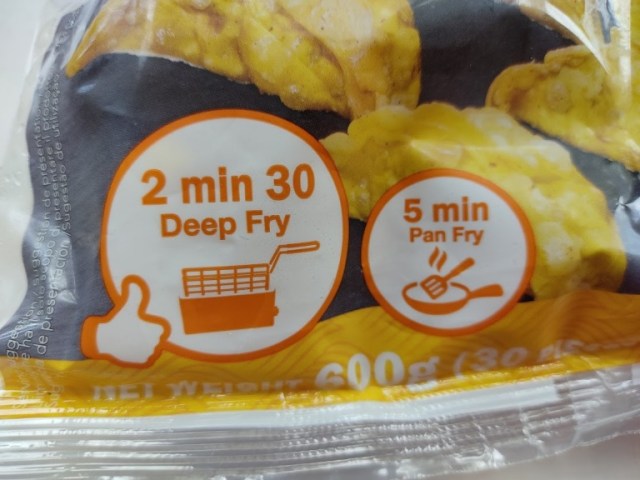
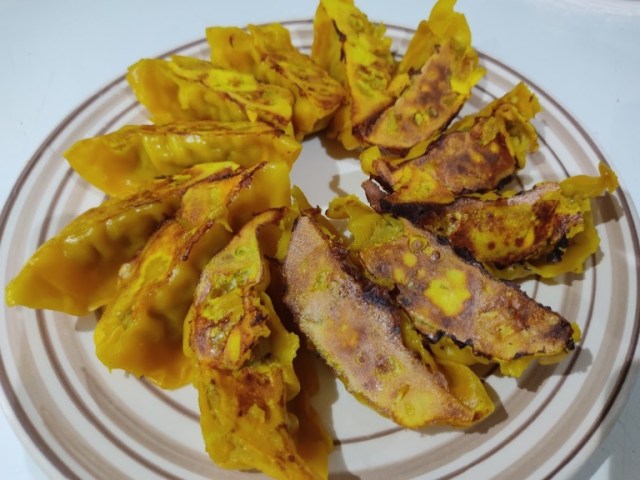
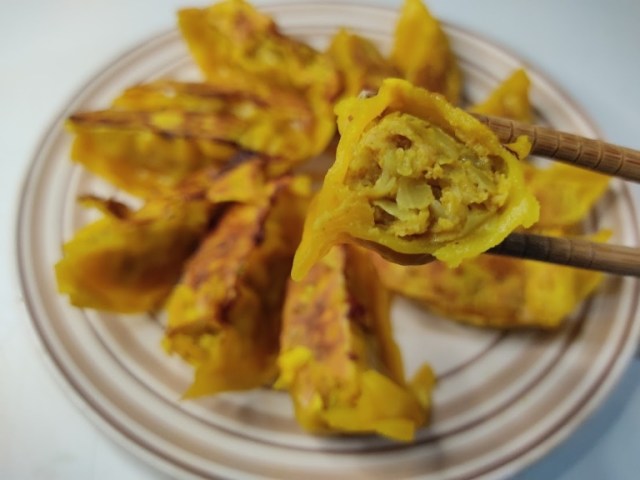
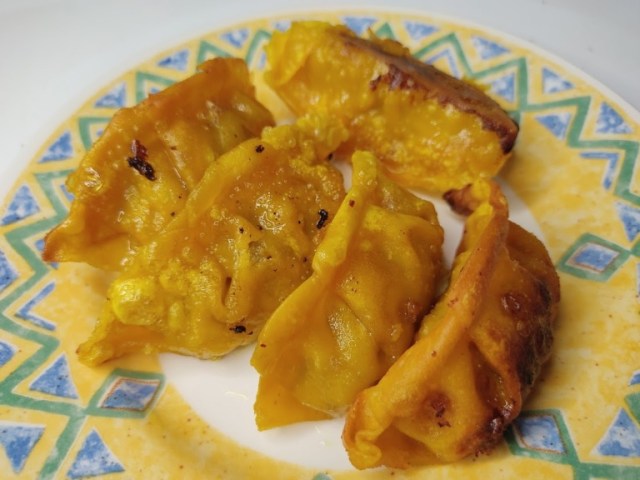
 The U.K. thinks Japanese curry is katsu curry, and people aren’t happy about it
The U.K. thinks Japanese curry is katsu curry, and people aren’t happy about it Katsudon vs. tonkatsu vs. katsu sandwich – What’s the best way to eat pork cutlet in Japan?
Katsudon vs. tonkatsu vs. katsu sandwich – What’s the best way to eat pork cutlet in Japan? Katsu isn’t curry! Four kinds of katsu, and three delicious ways to eat them【Video】
Katsu isn’t curry! Four kinds of katsu, and three delicious ways to eat them【Video】 All-plant-based katsu curry arrives at Ikea Japan
All-plant-based katsu curry arrives at Ikea Japan Celebrities slam katsu curry, divide netizens: “It’s a dish where 1+1 never actually makes 2”
Celebrities slam katsu curry, divide netizens: “It’s a dish where 1+1 never actually makes 2” Foreigner’s request for help in Tokyo makes us sad for the state of society
Foreigner’s request for help in Tokyo makes us sad for the state of society Japanese city loses residents’ personal data, which was on paper being transported on a windy day
Japanese city loses residents’ personal data, which was on paper being transported on a windy day Should you add tartar sauce to Japanese curry rice? CoCo Ichi makes diners an unusual offer
Should you add tartar sauce to Japanese curry rice? CoCo Ichi makes diners an unusual offer Seaside scenery, history, and so many desserts on Yokohama’s Akai Kutsu【Japan Loop Buses】
Seaside scenery, history, and so many desserts on Yokohama’s Akai Kutsu【Japan Loop Buses】 Red light district sushi restaurant in Tokyo shows us just how wrong we were about it
Red light district sushi restaurant in Tokyo shows us just how wrong we were about it Suntory x Super Mario collaboration creates a clever way to transform into Mario【Videos】
Suntory x Super Mario collaboration creates a clever way to transform into Mario【Videos】 New Pokémon cakes let you eat your way through Pikachu and all the Eevee evolutions
New Pokémon cakes let you eat your way through Pikachu and all the Eevee evolutions Studio Ghibli unveils Mother’s Day gift set that captures the love in My Neighbour Totoro
Studio Ghibli unveils Mother’s Day gift set that captures the love in My Neighbour Totoro Gacha capsule toy paradise for adults appears at Akihabara Station
Gacha capsule toy paradise for adults appears at Akihabara Station Akihabara pop-up shop sells goods made by Japanese prison inmates
Akihabara pop-up shop sells goods made by Japanese prison inmates McDonald’s new Happy Meals offer up cute and practical Sanrio lifestyle goods
McDonald’s new Happy Meals offer up cute and practical Sanrio lifestyle goods Japanese ramen restaurants under pressure from new yen banknotes
Japanese ramen restaurants under pressure from new yen banknotes French Fries Bread in Tokyo’s Shibuya becomes a hit on social media
French Fries Bread in Tokyo’s Shibuya becomes a hit on social media Studio Ghibli releases new action figures featuring Nausicaä of the Valley of the Wind characters
Studio Ghibli releases new action figures featuring Nausicaä of the Valley of the Wind characters New private rooms on Tokaido Shinkansen change the way we travel from Tokyo to Kyoto
New private rooms on Tokaido Shinkansen change the way we travel from Tokyo to Kyoto Tokyo Tsukiji fish market site to be redeveloped with 50,000-seat stadium, hotel, shopping center
Tokyo Tsukiji fish market site to be redeveloped with 50,000-seat stadium, hotel, shopping center All-you-can-drink Starbucks and amazing views part of Tokyo’s new 170 meter-high sky lounge
All-you-can-drink Starbucks and amazing views part of Tokyo’s new 170 meter-high sky lounge Beautiful Ghibli sealing wax kits let you create accessories and elegant letter decorations【Pics】
Beautiful Ghibli sealing wax kits let you create accessories and elegant letter decorations【Pics】 Studio Ghibli releases Kiki’s Delivery Service chocolate cake pouches in Japan
Studio Ghibli releases Kiki’s Delivery Service chocolate cake pouches in Japan New definition of “Japanese whiskey” goes into effect to prevent fakes from fooling overseas buyers
New definition of “Japanese whiskey” goes into effect to prevent fakes from fooling overseas buyers Our Japanese reporter visits Costco in the U.S., finds super American and very Japanese things
Our Japanese reporter visits Costco in the U.S., finds super American and very Japanese things More foreign tourists than ever before in history visited Japan last month
More foreign tourists than ever before in history visited Japan last month Sales of Japan’s most convenient train ticket/shopping payment cards suspended indefinitely
Sales of Japan’s most convenient train ticket/shopping payment cards suspended indefinitely Sold-out Studio Ghibli desktop humidifiers are back so Totoro can help you through the dry season
Sold-out Studio Ghibli desktop humidifiers are back so Totoro can help you through the dry season Japanese government to make first change to romanization spelling rules since the 1950s
Japanese government to make first change to romanization spelling rules since the 1950s Ghibli founders Toshio Suzuki and Hayao Miyazaki contribute to Japanese whisky Totoro label design
Ghibli founders Toshio Suzuki and Hayao Miyazaki contribute to Japanese whisky Totoro label design Doraemon found buried at sea as scene from 1993 anime becomes real life【Photos】
Doraemon found buried at sea as scene from 1993 anime becomes real life【Photos】 Tokyo’s most famous Starbucks is closed
Tokyo’s most famous Starbucks is closed One Piece characters’ nationalities revealed, but fans have mixed opinions
One Piece characters’ nationalities revealed, but fans have mixed opinions We asked a Uniqlo employee what four things we should buy and their suggestions didn’t disappoint
We asked a Uniqlo employee what four things we should buy and their suggestions didn’t disappoint Princesses, fruits, and blacksmiths: Study reveals the 30 most unusual family names in Japan
Princesses, fruits, and blacksmiths: Study reveals the 30 most unusual family names in Japan We try making a low-calorie katsu with tofu instead of pork【SoraKitchen】
We try making a low-calorie katsu with tofu instead of pork【SoraKitchen】 The best and worst Japanese food for foreigners
The best and worst Japanese food for foreigners Model Nana Suzuki declared ‘The Best Gyozanist 2021’, Mr. Sato and the gang robbed
Model Nana Suzuki declared ‘The Best Gyozanist 2021’, Mr. Sato and the gang robbed Katsu curry rice you can eat with your hands? Mos Burger unveils new Rice Burger Katsu Curry
Katsu curry rice you can eat with your hands? Mos Burger unveils new Rice Burger Katsu Curry How to make an imitation katsudon pork cutlet bowl using imitation katsu【SoraKitchen】
How to make an imitation katsudon pork cutlet bowl using imitation katsu【SoraKitchen】 Japanese black curry “experiment” takes place at an unlikely restaurant branch in Tokyo
Japanese black curry “experiment” takes place at an unlikely restaurant branch in Tokyo We try Ajinomoto’s new frozen gyoza, come up with a dangerously delicious way to eat them
We try Ajinomoto’s new frozen gyoza, come up with a dangerously delicious way to eat them Japan now has “Gyoza for Athletes”, thanks to figure skating Olympian Yuzuru Hanyu 【Taste test】
Japan now has “Gyoza for Athletes”, thanks to figure skating Olympian Yuzuru Hanyu 【Taste test】 What happens when a sweet bun maker teams up with a tonkatsu sandwich specialist?
What happens when a sweet bun maker teams up with a tonkatsu sandwich specialist? 3 unusual gyoza creations from Tochigi Prefecture, the Japanese capital of dumplings 【Taste Test】
3 unusual gyoza creations from Tochigi Prefecture, the Japanese capital of dumplings 【Taste Test】 The newest must-eat Japanese KitKats: Deep-fried KitKat katsu on sticks
The newest must-eat Japanese KitKats: Deep-fried KitKat katsu on sticks 103-year-old Japanese curry rice restaurant got dish right a century ago, still serves it today
103-year-old Japanese curry rice restaurant got dish right a century ago, still serves it today Japanese snack maker develops portable gyoza you can eat anywhere, anytime
Japanese snack maker develops portable gyoza you can eat anywhere, anytime We tried to use our leftover gyoza wrappers to make marshmallow puffs…but it didn’t go to plan
We tried to use our leftover gyoza wrappers to make marshmallow puffs…but it didn’t go to plan No time to cook? No problem! Three easy ways to improve instant curry
No time to cook? No problem! Three easy ways to improve instant curry
Leave a Reply